By Kajal Gaba
Photography: courtesy Once Upon My Wall
Read Time: 2 mins
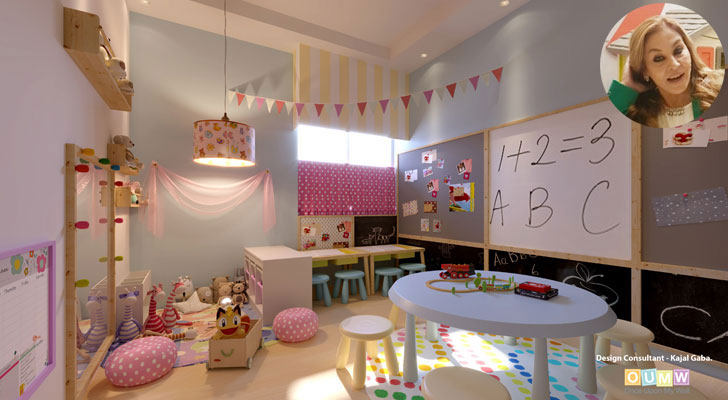 |
| An initial prerequisite to designing a space that supports learning effectiveness and stimulates the child’s cognitive functioning. A nursery classroom at Kara4Kids, Bengaluru (inset) Kajal Gaba |
In the second instalment of this three-part series on the impact of interior design on the holistic development of a child, designer Kajal Gaba focusses on communication through learning spaces like play groups, childcare centres and primary classrooms…
Designing for children is a science and because it is so customised, it can sometimes defy all rules of stereotype design and add value far beyond aesthetics, to serve a specific purpose.
Learning environments are envisioned as the prime facilitators in the holistic development of the child. Most receptive between age yrs. 0 to yrs. 6 - a child during these years can adapt very easily to his immediate surrounds, absorb knowledge, and respond wholesomely to any therapy. Every single characteristic of his physical environment contributes to his education and development.
 |
| Reception area of a preschool is a very important stimulator and motivator for children. Reception area at Kara4Kids Bengaluru |
 |
| Multiple engagement corners are important. Nursery classroom at Munchkin’s Palatium Preschool, Raipur |
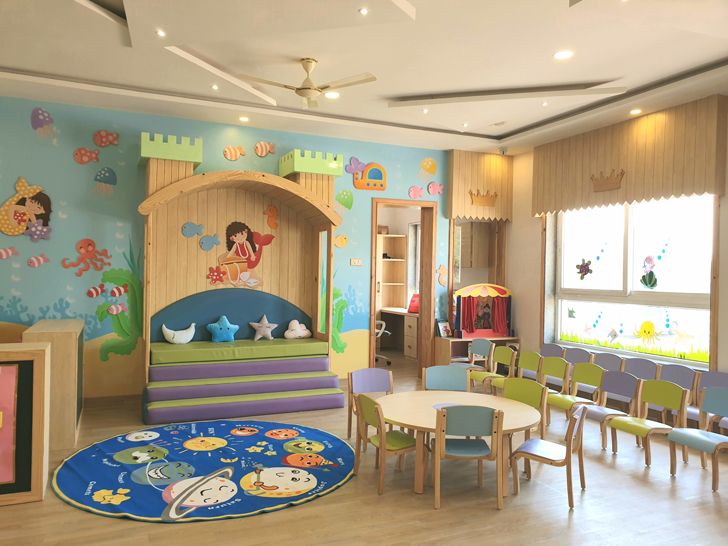 |
| Breaking the stereotype sitting patterns can help children relate better to their environment. Kindergarten classroom at Munchkin’s Palatium Preschool, Raipur. |
However, a design that might appeal to an adult may seem very intimidating to a child. It is, therefore, imperative that one visualises the design from a child’s perspective. I have closely studied the physical, emotional and psychological responses of children to the various ‘design components’ in their environment and realised that they possess the ability to interact with the space and the environments around them, which in turn has a deep impact on their developmental process.
An initial prerequisite to designing a space that supports learning effectiveness and stimulates the child’s cognitive functioning, is understanding what kinds of teaching and learning activities the space should enable.
Engaging environments that the child can explore, manipulate, and transform to suit his own physical and emotional requirements are of value far beyond aesthetics, serve a specific purpose and are the need for today’s children.
As a designer, I believe in customising my design and concepts. It is important for me to understand what the curriculum is striving to achieve, and imperative to keep a pedagogical approach in mind.
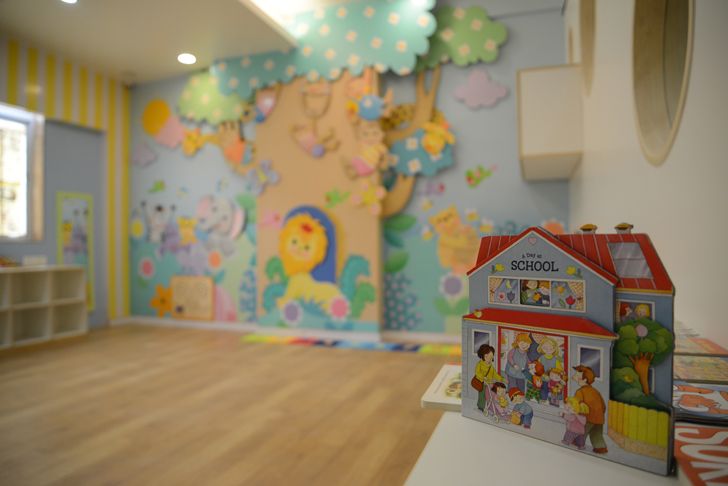 |
| It is imperative to stimulate and amplify a child’s imagination during the early years. OES International School, Mumbai |
Balancing design components is particularly important to avoid overstimulation in the child. One can achieve this with the help of the following:
• Ergonomically appropriate furniture and other elements
• Introducing ‘no activity breakups’ in the flow of interactive elements
• Children have noticeably short attention spans and to overcome this challenge, the physical environment must offer a wide variety
• A balanced colour palette can have positive psychological effects
• Natural light and accent lighting, is an especially important aspect to showcase activities, add visual stimulation or divide zones
• Introducing natural elements or bringing nature indoors can help introduce sensory stimulus to the environment
• Avoiding too much drama in the form of overpowering wall art in realistic forms or use of a dark palette, use of many materials and finishes
• Versatility in the activity zones, enabling easy movement and resetting of areas to create more space
• Innovative display options
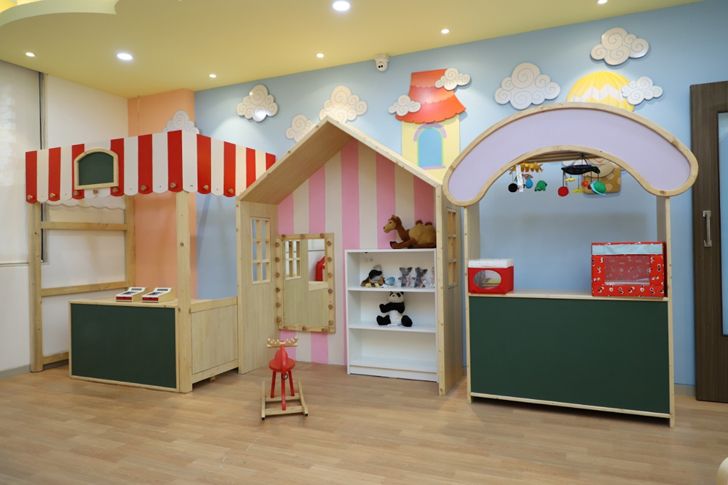 |
| The power of imagination formed during early childhood affects one’s entire life. A Role play corner at Balaji International school Mumbai |
Additionally, an ideal learning space design may be structured to support learning and assist facilitators and learners in their work.
Kajal Gaba is an, artist, illustrator, and specialist designer for creating Childcare, Learning, Play and Therapy spaces for children. The last 26 years of her practice have been centred around the fact that ‘child development is directly linked to the environment a child is provided’. As a pioneer in the field, Kajal mandates a perfect balance of therapy, play, exploration, and interaction in her designs, with the colour palette as the core essence! She can be reached at kajal@onceuponmywall.com
Thought n Impact is a platform, where India Art n Design (dot)com encourages professionals to share conceptual thinking, comment on theories and practices of art and design, give voice to the impact of design and so on... If you have something relevant to share, write to us at editor@indiaartndesign.com

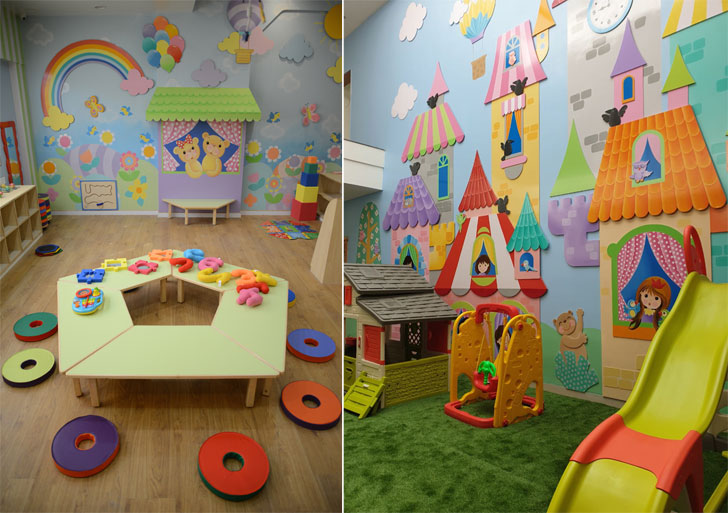

No comments :
Post a Comment